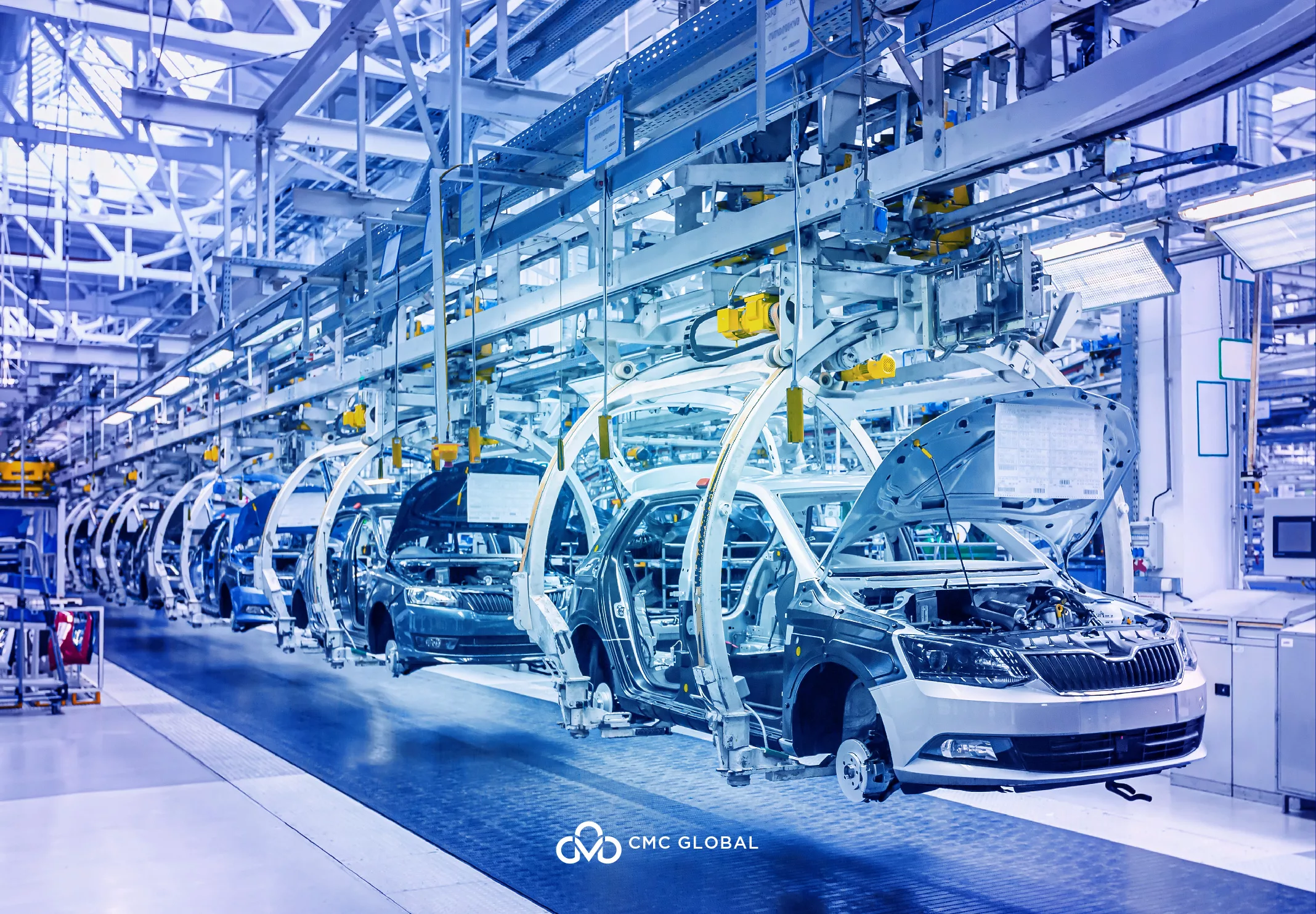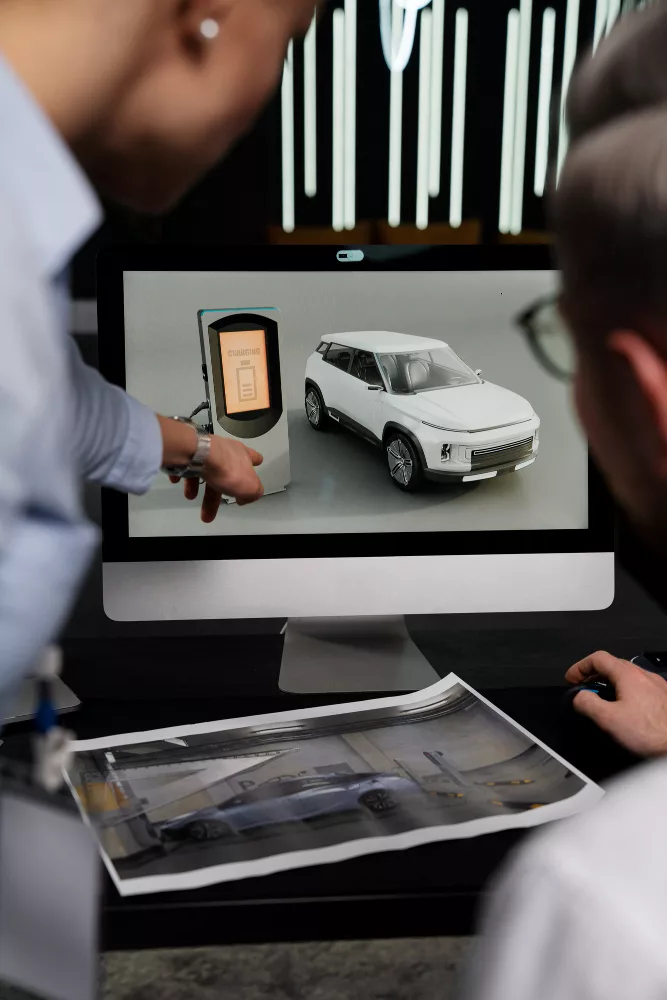In the journey toward the future of transportation, software-defined vehicles promise to revolutionize various aspects of our lives. They hold the potential to enhance road safety, optimize traffic flow, reduce congestion, and minimize the environmental impact of transportation.
Join us on this exciting journey as we unveil the mysteries of software-defined vehicles and witness how they are poised to transform how we move and interact on our roads.
Definition of software-defined vehicles
The term “software-defined vehicle” refers to a vehicle whose features and business activities are mostly software-enabled. Software-Defined Vehicles are the next step in the automotive industry’s advancement. They are the foundation for many other advances, such as self-driving and connected cars.
According to Deloitte, “Software-defined vehicles are the gradual evolution of automobiles from highly electromechanical terminals to intelligent, scalable mobile electronic terminals that can be continually upgraded.”
Benefits of software-defined vehicles
The advantages of software-defined vehicles are:
- Enhanced safety through technologies such as anti-collision systems and driver assistance
- More comfort is provided by onboard infotainment systems incorporating linked capabilities like music and movie streaming.
- More details about vehicle performance through connectivity and diagnostics, enabling more effective preventative maintenance.
- The ability of vehicle manufacturers to introduce new features and functionality via over-the-air updates.
The Foundation of software-defined vehicles
The foundation of software-defined vehicles relies heavily on two critical components:
- Connectivity and Communication Infrastructure
- Vehicle-to-Everything (V2X) Communication
These components are pivotal in enabling vehicles to interact with their surroundings and exchange data in real-time, allowing for advanced capabilities such as autonomous driving and enhanced safety features.
#1 Connectivity and Communication Infrastructure:
In a software-defined vehicle ecosystem, robust and seamless connectivity is fundamental. This involves the integration of cutting-edge communication technologies to ensure constant data exchange between vehicles, infrastructure, and other entities within the transportation environment. Key aspects of connectivity include:
Internet of Things (IoT) Integration:
Software-defined vehicles have many sensors and actuators that generate vast amounts of data. IoT integration allows these vehicles to connect to the internet and communicate with other IoT devices, cloud platforms, and data centers. This connection enables data transfer for analysis, decision-making, and system updates.
5G and Beyond:
The introduction of 5G technology significantly enhances the capabilities of software-defined vehicles. With ultra-low latency and high data transmission rates, 5G networks enable real-time communication between vehicles, infrastructure, and backend systems. This ensures faster response times and more reliable connections, critical for safety-critical applications.
#2 Vehicle-to-Everything (V2X) Communication:
V2X communication is a central concept in software-defined vehicles, facilitating interaction between vehicles and various elements of the transportation ecosystem. V2X communication can be categorized into four main components:
Vehicle-to-Vehicle (V2V)
V2V communication allows vehicles to exchange information directly with nearby vehicles. Software-defined vehicles can coordinate their movements by sharing data on speed, position, acceleration, and other parameters, enhancing safety and enabling cooperative maneuvers like platooning.
Vehicle-to-Infrastructure (V2I)
V2I communication enables vehicles to communicate with the surrounding infrastructure, such as traffic signals, road signs, and smart roadways. Through V2I communication, vehicles can receive real-time traffic information, road conditions, and even traffic light timings, optimizing routes and improving traffic flow.
Vehicle-to-Pedestrian (V2P)
V2P communication involves interactions between vehicles and pedestrians equipped with mobile devices or wearable technology. Software-defined vehicles can detect and communicate with pedestrians, providing warnings or alerts to both drivers and pedestrians to prevent potential accidents.
Vehicle-to-Network (V2N)
V2N communication allows software-defined vehicles to connect to backend cloud servers and data centers. This connection enables access to up-to-date maps, traffic data, and software updates, enhancing the vehicle’s decision-making capabilities and ensuring it operates with the latest information.
Software-defined vehicles features
Software-defined vehicles have various innovative features that revolutionize the driving experience and transportation industry. Three prominent features are Autonomous Driving, Over-the-Air (OTA) Updates, and Data Security.
#1 Autonomous Driving:
Autonomous driving, also known as self-driving or driverless technology, is one of the most transformative features of software-defined vehicles. It enables vehicles to operate without direct human intervention by utilizing a combination of advanced sensors, cameras, LiDAR, radar, and sophisticated algorithms. Autonomous driving is typically categorized into different levels of automation:
- Level 1 (Driver Assistance): Basic driver assistance features, like adaptive cruise control and lane-keeping assistance.
- Level 2 (Partial Automation): Advanced driver assistance systems (ADAS) that can simultaneously control steering and acceleration/deceleration, but the driver must remain engaged and ready to take control at any moment.
- Level 3 (Conditional Automation): The vehicle can handle most driving tasks under specific conditions, but the driver must be prepared to intervene when prompted by the system.
- Level 4 (High Automation): The vehicle can be fully autonomous driving within certain operational domains or geofenced areas without human intervention.
- Level 5 (Full Automation): The vehicle can perform all driving tasks under any conditions without any human input.
Autonomous driving promises enhanced safety, increased efficiency, and reduced traffic congestion. It can transform mobility for people with disabilities and make transportation more accessible and convenient for everyone.
#2 Over-the-Air (OTA) Updates:
Software-defined vehicles are designed to leverage OTA updates, similar to how smartphones and other connected devices receive software updates remotely. OTA updates allow automakers to wirelessly push software upgrades, bug fixes, security patches, and new features to vehicles.
Software Enhancements
OTA updates enable automakers to continually refine and enhance the vehicle’s software, improving performance and stability and introducing new functionalities over time.
Bug Fixes and Security Patches
As with any software, bugs and vulnerabilities can arise. OTA updates allow automakers to address these issues promptly, ensuring optimal vehicle performance and safety.
Adaptation to Regulations
As regulations or safety standards evolve, OTA updates enable vehicles to comply with new requirements without requiring a physical visit to the dealership.
#3 Data Security:
As software-defined vehicles rely heavily on data collection, processing, and communication, ensuring data security and privacy is paramount. Key aspects of data security in software-defined vehicles include:
Secure Communication
Implementing robust encryption and authentication protocols safeguards data transmitted between the vehicle, infrastructure, and backend systems.
Data Privacy
Defining clear policies and procedures for data handling and anonymization to protect the privacy of vehicle occupants and other road users.
Cybersecurity Measures
Implementing robust cybersecurity measures to protect software-defined vehicles from hacking attempts and malicious intrusions.
Redundancy and Fail-Safe Mechanisms
Integrating redundant systems and fail-safe mechanisms to ensure the vehicle’s safety in case of system failures or cyber-attacks.
By prioritizing data security, automakers can instill trust in consumers and regulators, leading to wider adoption of software-defined vehicles and realizing their transformative potential in the transportation landscape.
Overcoming software development challenges with CMC Global
Given the software industry’s numerous obstacles, it’s no wonder that many organizations are looking for assistance from a development partner. CMC Global, for example, may assist at every level of the software product development process, from code review to long-term maintenance and support.
The advantages of collaborating with CMC Global for software product development include:
- Leveraging advancing technologies like AI, machine learning, big data, and others.
- Continuous delivery cycles shorten your time to market.
- Filling gaps in your internal team and increasing your current development capabilities.
Ready to learn how CMC Global can help you overcome technical challenges?
Contact us for further consultation.






